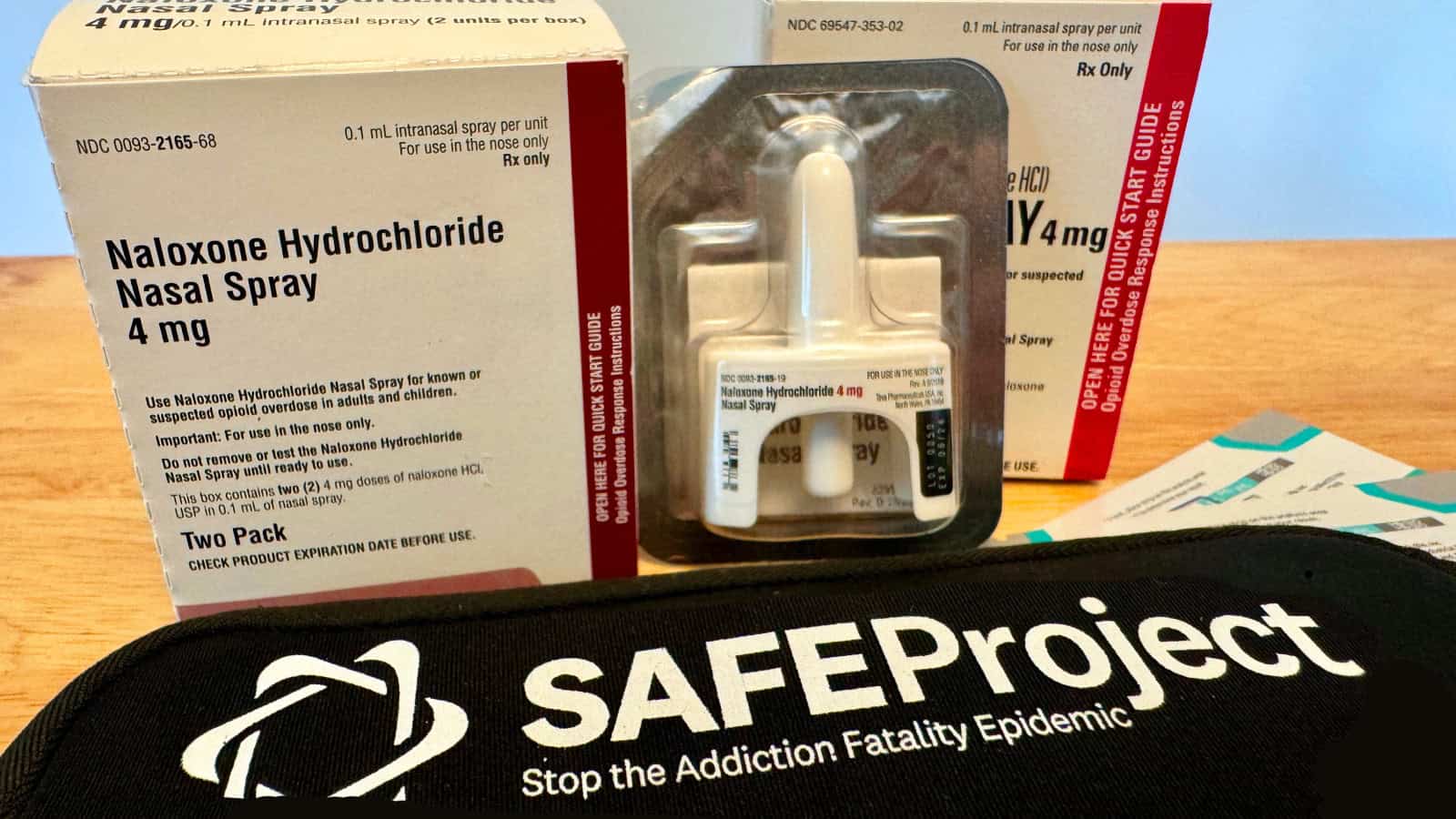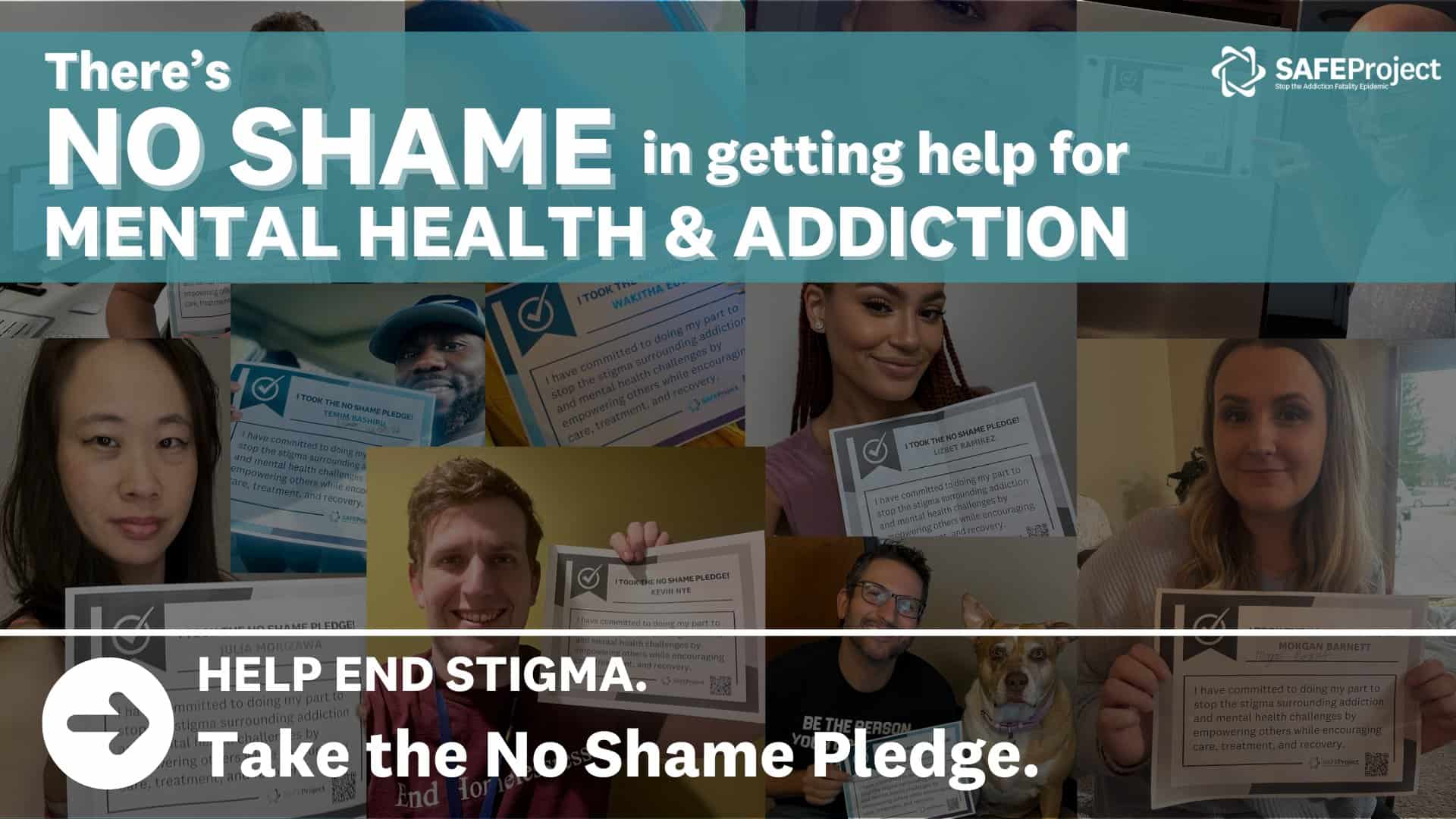On November 26, 2022, Kevin Nye shared a brief story on Twitter about having administered naloxone to an individual suffering an overdose.
I administered Narcan to someone overdosing on my way to the movies tonight.
When the EMS arrived, I let them know, both the number of doses and how long ago so they could take over care.
As he walked away, he said under his breath, “People shouldn’t have that shit.”
— kevin nye (@kevinmnye1) November 27, 2022
A striking part of his story – setting off a series of responses, retweets, and learning experiences filled with laughter and anger alike – was how an emergency responder had muttered, “People shouldn’t have that shit”… in response not to the opioids themselves, but to the naloxone.
Naloxone is a non-scheduled (non-addictive), prescription medication used in opioid overdoses to counteract life-threatening depression of the central nervous system and respiratory system, allowing an individual experiencing an overdose to breathe normally.
Naloxone saves lives.
Naloxone – available sometimes in the NARCAN® brand name as well as through generic naloxone hydrochloride nasal sprays – is also available throughout the United States by way of individual states’ standing orders.
Kevin shared much of this information throughout his tweet thread, including the state access rules. His approach was courteous and thoughtful, but not without the sense of humor sometimes needed when combating some of the more pervasive myths.
Shortly after the tweet went viral, it also found its way to Reddit, where a user coined a new name for Kevin: “Kevin Nye the Narcan Guy”.
We caught up with Kevin to discuss his original naloxone administration experience, as well as the subsequent events sharing his story on Twitter.
Tell us a little about yourself.
My name is Kevin Nye. I’m an advocate, I’m a writer, I work in homelessness services in Minneapolis… and that’s most of it right there!
What were your initial expectations when you decided to tweet about your experience?
Part of it was that I just wanted to process what happened, because it all happened so fast. In the tweet I mentioned I was on my way to a movie, so I just had a few minutes to kind of write it out. I have a decent platform. I thought that it would get some responses and some hits. I certainly did not think that it was going to go as crazy viral as it did. But my hope was to just use it as a story for what I know to be true working in this field: that there’s so much stigma and so much of it comes from first responders, too, that I think most people aren’t necessarily aware of that, so I just wanted to highlight just how much our system is built against people who use drugs, and their safety and their flourishing.
The Responses

It seems you need to have a sense of humor sometimes to fight the misinformation.
I think you have to, and especially when you recognize that somebody is joking, because you’ll get responses all the time from people who are afraid of fentanyl. A week after I posted this story, there was a commercial for an upcoming episode of the FBI show – and this is like classic CBS melodrama, crime drama – where they arrest some guy in this big lobby, and they open up a briefcase, and they go, “Wait a minute… that’s fentanyl. If that bag opens, we’re all dead.” Just thinking about how real that is, and that people genuinely believe that… when he made that joke, I was like, “I gotta play into this!” because we have to laugh about how absurd it is. It really is the only response to the absurdity of the claims that are out there about fentanyl.
I think more and more people are not buying into these myths – and that’s why I think a place like Twitter is so important, a place to talk about these things – is because if you turn on the local news, you’re going to hear things that are not true about fentanyl. If you read your newspaper, they’re going to be quoting police officers that are saying things that are not true about fentanyl, right? So a place like Twitter that has kind of an open dialogue, and you talk to people who are on the ground experiencing this and doing this work, you get a lot closer to the truth, I think.

Tell us about the myths that people seem to believe about the acquisition of naloxone.
To be fair, it depends on where you live as to how easy it can be to access it, but ultimately it’s not hard anywhere. If you’re determined to get some, you can get some without breaking any laws! Certainly as someone who works in the field, I’m actually required to carry it at work, so it’s no stretch for me to carry it when I’m not at work, too. I think that speaks again to the demystification of that it is an extremely normal drug; it’s existed for fifty years, it’s used in hospitals every single day… Folks are more and more realizing, and more and more infrastructure is being put in place, so that your average person can be trained on it and carry it.
How about the “ramifications” for carrying it? Some people are required to have it; it’s just an everyday part of the job.
If more people had it, more overdoses would be prevented, right? It’s a 30-minute training, and getting it and keeping it on you can make that difference. It’s not hard, and it’s really – as we saw in this incident and so many others that don’t get as much press and coverage – it saves lives.

What is the overall availability of naloxone like in America?
So everywhere that I’ve lived and that I’ve been aware of it – so that’s Los Angeles and Minneapolis – I didn’t buy it. In Los Angeles, the state of California actually purchases it and distributes it to nonprofits for free. Out here in Minneapolis, nonprofits have to purchase it and they can get some bulk pricing and stuff, but again, you can get Narcan for free, and a lot of times… for example, if you are prescribed an opioid for pain, you’re very often prescribed Narcan along with it. It’s just expected that you get that, too.
So, again, people who carry around Narcan are not dropping $75 for the two-pack or even… I mean, sometimes folks do have to go to their pharmacy, and ask for it, and pay a little bit… but the best way to get it is through a local harm reduction nonprofit and you can very often get it for free.
What has your experience been like working with other professionals around naloxone?
I’ve heard the stories, but ultimately everywhere I’ve worked has been very pro-naloxone and we get it straight from the harm reduction folks, who obviously speak very highly of it, but ever since I’ve been talking about it online I’ve heard stories of folks who, when they were at their normal check-up with their doctor, asked if they could get some to carry around, and their doctor gave them a huge lecture about it! So there’s definitely, in the medical community, still some resistance and some feelings about it.

What are the signs that someone might be experiencing an overdose?
The opioid crisis is enough a part of our statistics now that it’s a reasonable assumption that if you see a younger person slumped over on the side of the road, chances are pretty good. In this situation, there were two other people there who were helping who told me that he was overdosing, so that’s always helpful. There is what we call repressed breathing, or a gurgling sound, where the body is struggling to get oxygen but can’t quite… skin changing color, either becoming more ashy or even blue… eye dilation can be helpful if you want to go sticking your hands in people’s faces… it’s not really my thing!
Ultimately I’m probably going to administer naloxone if I have it, and they’re showing any signs of non-responsiveness and anything that could be interpreted as overdose, because what’s the worst that could happen? Part of naloxone training is also calling 9-1-1, so their ambulance is on their way; it’s not like I’m going to wait to call 9-1-1 to see if they respond to naloxone, right? So I might as well use it.

We have this situation with the stigma of it being a drug use case rather than a medical situation.
Ultimately the ambulance is going to have naloxone; it’s not like they’re going to not grab it and put it on the truck if you don’t tell them that it’s an overdose. But in the U.S. and in a lot of places, you call the same number whether you want an ambulance, a fire truck, or a squad car, right? And whoever is receiving that call is going to dispatch one or more of those responders based on what they hear. When I train, I always tell people to emphasize the medical situation rather than the drugs, because you want an ambulance, you don’t want a squad car. You’re probably going to end up with both anyway, but let’s make sure the ambulance gets there.
And these are the two extreme versions, but saying on the 9-1-1 call, “There’s somebody who’s non-responsive. They’re struggling to breathe. They can’t wake up…” is very different from, “Hey, can you come here? There’s some guy who did a bunch of drugs.” Right? The first one’s definitely going to get an ambulance. The second one might get misinterpreted as somebody is acting erratic and we need to send an officer.
What does that say about society right now? What can we do to change that?
Where do we start? The reason I tweeted this out in the first place, and I think where the stigma comes from, is that we ultimately believe that people who use drugs deserve to suffer in some way. Maybe we don’t all believe that they deserve to die, but we think that they deserve for bad things to come as a result of their drug use, rather than seeing them as people that need to get better, right? And so I think that we definitely need policy change, we need reform to reflect better values, but I also think we all need to confront that internally within ourselves, because it’s been instilled in us from very young.
The “war on drugs” has been going on a long time. There’s been nothing but negative association toward people who use drugs, that they are bad, that they are evil, that they want to harm you, that they’re up to no good, that there’s nothing good about them, or going on in their lives. And even if we know that not to be true, it’s in there. It’s mixed in, and we have to constantly be working against that and confronting it when it comes up.
How does naloxone fit in to the rest of the work in your life? What are the barriers you face in each area, and maybe even some of the acceptances you’ve seen?
In homeless services, I’ve not really encountered much resistance to carrying naloxone. But I’ve worked for great organizations that share my values. With churches and the religious side, I’ve definitely been surprised by the amount of folks that are interested and I think that that’s in large part because the opioid crisis specifically cuts across demographics that cocaine or the AIDS crisis didn’t, right? In some ways, white privilege hasn’t protected folks from opioids, and so it’s a lot harder to “other” than crack was. I think that has certainly helped people be more interested in learning about the crisis and how to respond to it, and I think it really… the fact that naloxone works the way it does, it’s kind of a miracle, in a way, because we don’t have that for stimulants, and we don’t have that for any other type of overdose. The thing almost seems like it resurrects people from the dead, right?
I think that folks, whether they’re religious or not, like the idea of being able to be a hero to somebody, and to be in the right place at the right time with the right thing. So I haven’t seen a ton of resistance, at least for the folks that already appreciate my work or know who I am and follow me on purpose. When things go viral is when you start to see the other people show up and come in, but I just tend to look right past those.
Now that it’s been a little over a month since you put out the tweet, has the feedback subsided a little bit, or are you still getting a trickle of commentary from it?
I’ll be honest: I muted the thread after a couple weeks. I muted it, and then I unmuted it… because I want to engage as much as possible, but eventually it was just too much. Especially after those first couple weeks, that was when the people who really wanted to engage thoughtfully, or had the funny responses… they already had their pass at it. But it’s kind of fallen by the wayside.
I thought that when I tweeted it, I knew it would get some traction, but when it got as much as I did… I thought, well I’m not a resource for how to get it in every state. I know where you can get it in California, because I was there, I know where you can get it here, but I know it’s different wherever you are, and you guys [SAFE Project] have put out that resource, so I was like… thank you, let me push it off to the people that have already done that work!
Do you have any final thoughts or commentary, whether it be on the experience of the tweet or just in general around the crisis?
My favorite responses that I got – and there were a lot of them – were people saying, “I didn’t know how easily I could get it!” or “I looked up how to get it, and I’m going to go do that today!” And so the idea that tweet made it so that at least ten or twelve people now carry Narcan that didn’t before… that’s amazing to me.
There were also a lot of people who shared really, really heartbreaking stories, and people messaging me saying things like, “I wish someone like you had been around when my person overdosed.” And so just the honor of sitting with that was a big part of what the response to that tweet was and meant to me.
My favorite response was one person who read the entire thread, obviously and clearly sat with all of the emotions and the reality and the anger and the frustration, and they asked me, “What movie were you going to see?!” I just thought that was great; I had a good laugh about that, because if I had read that – I’m a movie guy – I would have been curious too, and I just love that he had the courage to ask.
And the answer was Glass Onion!

Thank you to Kevin Nye for sharing his experience and knowledge with us! Follow him on Twitter at @kevinmnye1, and stick with SAFE Project throughout January for more stories and resources for this No Shame New Year!



